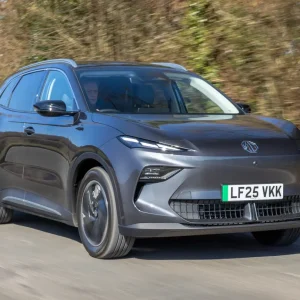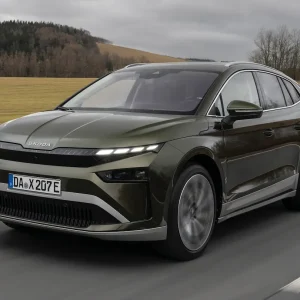As chart-topping sales successes go, they don’t come much bigger than the Peugeot 208. Although this may come as a slight surprise to British readers, the 208 was Europe’s best-selling car in both 2021 and 2022, while the electric E-208 variant was the continent’s best-selling B-segment EV in the latter year. It’s safe to say, therefore, that Peugeot has a lot riding on the success of the newly-facelifted model tested here.
New mild hybrid engine options have been introduced with the update, and petrol versions also remain available, but in this review we’re concentrating on the E-208. Like with many Stellantis group EVs we’ve tested recently, this has received a powertrain upgrade, with the motor’s output increased from 136hp to 156hp, and the battery’s capacity up from 50kWh to 51kWh (a version with the old-spec powertrain is set to rejoin the range from early 2024). The effects of the upgrade can be felt on the road, with pretty punchy acceleration. As for the rest of the driving experience, the handling is good, with the E-208 feeling nicely planted in corners and the effects of its low centre of gravity being readily apparent. The steering is less impressive, lacking feel and seeming slower and less responsive than expected given the small wheel associated with Peugeot’s i-Cockpit set-up. Ride quality is fairly good, with the E-208 feeling supple over undulations, but we did notice a fair amount of motorway wind noise.
Exterior design changes with the facelift include the introduction of Peugeot’s three-claw light signature, and body-colour elements for the front grille, which make the car fairly striking to look at, especially in the new Agueda Yellow paint finish pictured here. Changes have also been made to the rear light arrangement.
Given that our GT-spec test car was the range-topping variant, we were disappointed by the presence of some scratchy plastics on the inside of the doors, though the cabin does also get some carbon-effect trim and gloss plastic in key areas. A 10in infotainment touchscreen is standard throughout the range, and features HD graphics with the Allure and GT equipment grades. These specs also come with a redesigned 10in digital instrument display, which works very well, providing all the info drivers need including sat-nav instructions. We did however find it annoying that cabin temperature adjustments have to be made via a touchscreen sub-menu, with Peugeot not offering the physical climate controls here that are maintained by fellow Stellantis brand Vauxhall. Four USB sockets are provided with Allure and GT grades – two in the front, two in the rear.
Legroom in the rear of the E-208 is okay, but headroom would be tight for tall adults.
A 309-litre boot looks a decent size, but is 43 litres smaller than that found with petrol 208s.
In terms of costs, this E-208 works out slightly cheaper to buy and run than an equivalent version of the closely-related Vauxhall Corsa Electric. However, both Stellantis models are blown away in cost terms by the larger MG4, which offers a fairly compelling alternative for fleets.
Peugeot E-208 51kWh 156 GT
P11D: £36,195
Residual value: 31.3%
Depreciation: £24,220
Fuel: £3,375
Service, maintenance and repair: £1,801
Cost per mile: 48.99p
Range: 248 miles
CO2 (BIK %): 0g/km (2%)
BIK 20/40% a month: £12/£24
Luggage capacity: 309 litres
Battery size/power: 51kWh/156hp





